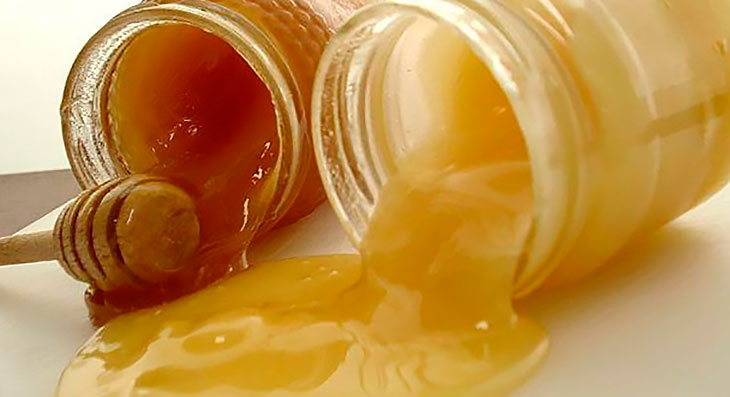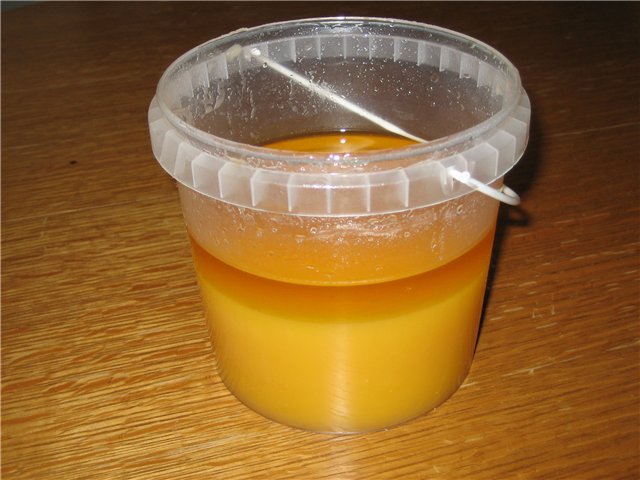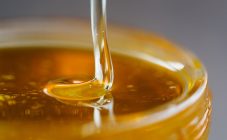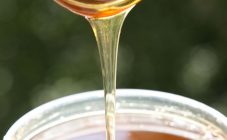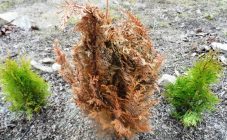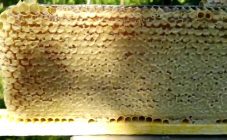Content:
Honey is a very popular product, which is in increasing demand every year. It contains a large amount of vitamins, minerals, is digested by the human stomach without residues, helps with many diseases, especially colds. But all these beneficial properties are found only in a natural product. Unfortunately, there are many ways to prepare a counterfeit, so you should know some rules by which you can distinguish a natural product from a fake.
The reason for the opacity of the honey
Especially often people pay attention to the cloudy sediment in fresh honey. Of course, transparent is more pleasing to the eye, but you should know that fresh nectar often has sediment. So why is fresh honey cloudy and not transparent? The thing is that when pumping out sweet amber, in addition to the final product we are used to, honey contains sediment in the form of an admixture of wax, remnants of bee bodies, small parts of honeycombs, etc.
Basically, this is all cleaned up in several ways:
- Filtration;
- Defending, for a short time.
The explanation for this fact, why fresh honey is opaque, is quite easy. When filtering through a sieve, impurities in the form of wax and bee bodies remain on the latter. When standing, the sediment rises up independently, without additional impact. But in the first few days, this sediment is evenly distributed throughout the product.
Also, sweet amber begins to cloudy when the sugar process takes place. In some varieties of honeydew, this process begins relatively quickly, a few weeks after pumping, other varieties remain transparent for a very long time. For example, honey harvested from acacia does not get sugar for several years.
In the matter of buying molasses, it should be understood that fresh honey is not determined by color and transparency. There are many other ways than checking bee nectar "by eye". For example, fresh molasses will never be too runny. If you try to check the pad with a wooden spoon, then in the process of scrolling the spoon, honey will wind on it.
Does fresh honey dissolve in cold water
The methods for checking fresh food also vary. A common test is a cold water test. Here opinions differ. Some argue that molasses dissolves in cold water, and the method of its dissolution also deserves special attention. Others argue that honey does not dissolve in cold water. So, does honey dissolve in cold water? The regulations for this product are determined by the Veterinary and Sanitary Service. According to the examinations and studies carried out by this service, it becomes clear that natural fresh nectar does not dissolve in cold water, no matter how much it is dissolved there. That is, if you put a spoonful of liquid or candied food in a glass of cold water, it will remain insoluble. The honey collected from acacia blossoms is liquid. If it is filled with water, due to its viscosity, it can split into honeycombs, but never dissolve.
This process is explained by the difference in temperature and density of water and honey.Since the latter consists of 20% water and 80% dry matter, it may blur slightly. But it is not possible to dissolve it. Thus, it is now known whether honey dissolves in water.
Causes of turbidity of honey
Medoc has a variety of shades, depending on the type of product. Not every variety has transparency. By color, it can be divided into three main groups: light, medium-colored, dark. The latter are considered the most beneficial for the body.
The process of processing nectar into a honeydew begins when collecting nectar from flowers. The bees transfer the nectar taken from the flowers to the wax combs. This is not the end of their activity, since to obtain sweet amber it is not enough to collect nectar, it still needs to be processed in hives. In them, insects evaporate unnecessary water, mix nectar with wax, adding certain enzymes to it. Only 20-25% of water remains in the nectar, this happens in the first day after the nectar enters the honeycomb.
Ripe honey is identified by the wax seal in the combs, which are produced by the same bees. If unripe honey is pumped out of the honeycomb, it will not be stored for a long time. After a short period of time, the product will begin to ferment, as a result of which the honey will begin to cloud. The vitamin composition in unripe honey is underdeveloped, which significantly reduces its quality and consumer demand for it.
Also, the fall after pumping can be slightly unclear, due to the high glucose content in this particular variety. In addition to glucose, bee nectar contains other sugar substances, but they do not add precipitation and cloudy shades.
Why is there sediment in the nectar
When pumping out honey, the beekeeper must collect the first sediment from the surface and remove it from the product, since this, in most cases, is the remains of wax, corpses of insects, etc. This happens during the first week. If after that, in a short period of time, a precipitate appears in the product again, and its transparency becomes slightly unclear, it means that it is not ripe. This means that it should be eaten as soon as possible, as there is a high risk of fermentation of the product. In some cases, the nectar begins to crystallize almost immediately after pumping.
So why is honey cloudy after pumping out? This may be due to the late collection of honey due to a number of reasons. The most basic is the weather. If you do not have time to collect a certain variety from the honeycomb in time, the bees will apply nectar to it from other flowers, which begin to bloom a little later. For example, take linden and sunflower nectar. Linden honey that has not been picked in time will mix with sunflower nectar and begin to crystallize faster, or, as beekeepers say, to sit down. The crystallization rate of bee nectar depends on the glucose content in it. The higher the content of this sugar, the faster the crystallization process takes place. This is the answer to the question: "Why does honey sit down quickly?" The reason why honey does not shrink can be the wrong storage temperature.
The reason for the opacity of transparent honey
If after the purchase, after a short period of time, the transparent honey becomes cloudy, you should not immediately think that this is a fake. It is quite possible that the process of thickening or crystallization begins in the product. This, on the contrary, indicates its excellent quality, since any sweet amber, except that collected from acacia flowers, sooner or later is subject to this process. The crystallization of the honeydew does not in any way affect its vitamin composition. It can still be used to treat colds or for general strengthening of the body. The crystallization process can be accelerated by changing the temperature regime.
The optimum storage temperature is 13-15 ° C. If the storage temperature is higher, the consistency of bee nectar will remain liquid for a longer time, if lower, it will quickly thicken.That is why honey becomes cloudy. At temperatures above 40 ° C, it stops producing crystals, glucose begins to evaporate, and the product loses all its beneficial properties. Moreover, it can even harm the person who uses it, as high fructose and insufficient glucose can provoke a strong allergic reaction.
Honey perfectly copes with many diseases, activates the body's immune system, increases stress resistance. He is loved by all adherents of proper nutrition and a healthy lifestyle. The main thing is to understand the characteristics of the selected variety in order not to get on a fake product.

